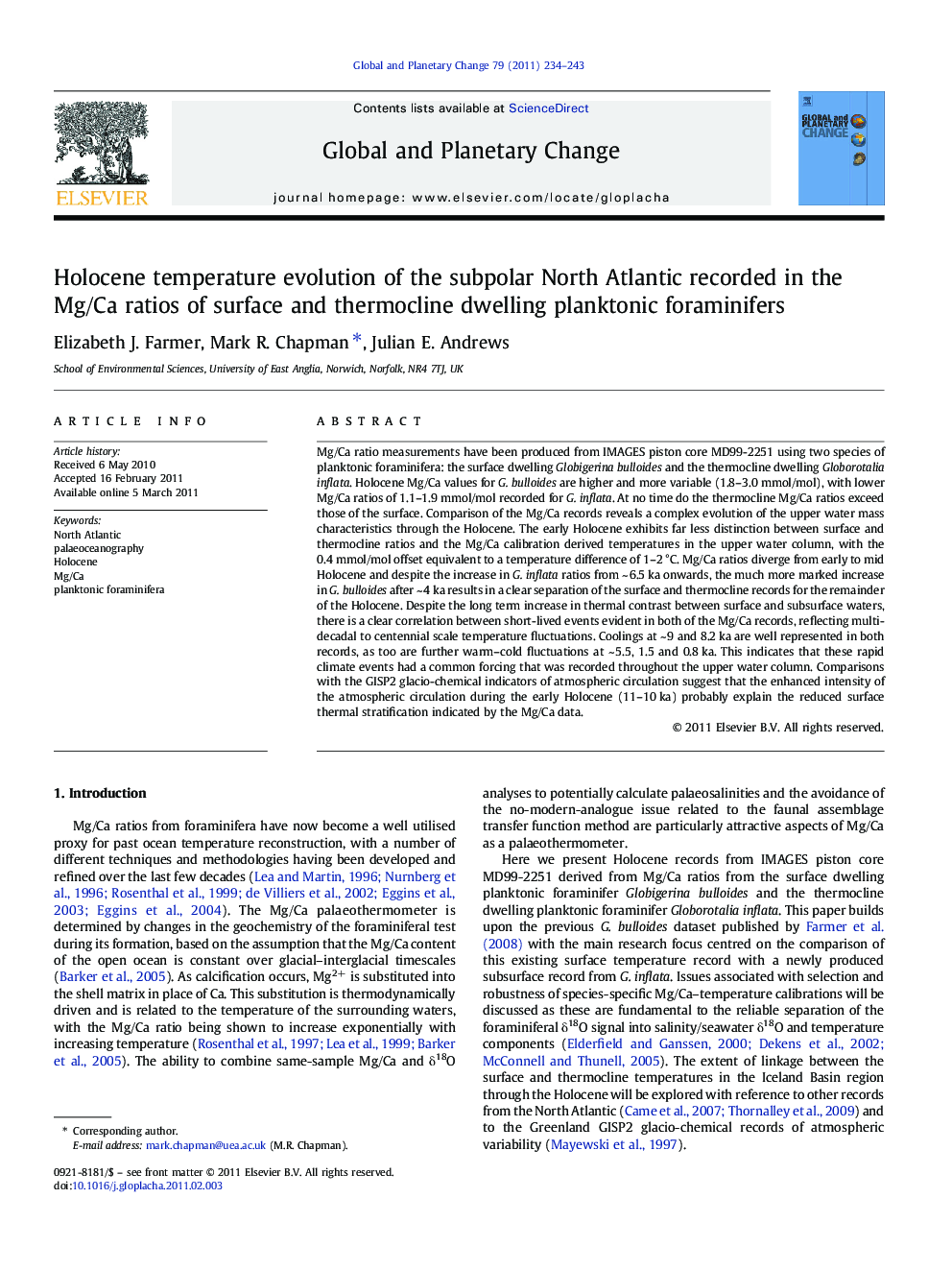| کد مقاله | کد نشریه | سال انتشار | مقاله انگلیسی | نسخه تمام متن |
|---|---|---|---|---|
| 4463769 | 1621692 | 2011 | 10 صفحه PDF | دانلود رایگان |

Mg/Ca ratio measurements have been produced from IMAGES piston core MD99-2251 using two species of planktonic foraminifera: the surface dwelling Globigerina bulloides and the thermocline dwelling Globorotalia inflata. Holocene Mg/Ca values for G. bulloides are higher and more variable (1.8–3.0 mmol/mol), with lower Mg/Ca ratios of 1.1–1.9 mmol/mol recorded for G. inflata. At no time do the thermocline Mg/Ca ratios exceed those of the surface. Comparison of the Mg/Ca records reveals a complex evolution of the upper water mass characteristics through the Holocene. The early Holocene exhibits far less distinction between surface and thermocline ratios and the Mg/Ca calibration derived temperatures in the upper water column, with the 0.4 mmol/mol offset equivalent to a temperature difference of 1–2 °C. Mg/Ca ratios diverge from early to mid Holocene and despite the increase in G. inflata ratios from ~ 6.5 ka onwards, the much more marked increase in G. bulloides after ~ 4 ka results in a clear separation of the surface and thermocline records for the remainder of the Holocene. Despite the long term increase in thermal contrast between surface and subsurface waters, there is a clear correlation between short-lived events evident in both of the Mg/Ca records, reflecting multi-decadal to centennial scale temperature fluctuations. Coolings at ~ 9 and 8.2 ka are well represented in both records, as too are further warm–cold fluctuations at ~ 5.5, 1.5 and 0.8 ka. This indicates that these rapid climate events had a common forcing that was recorded throughout the upper water column. Comparisons with the GISP2 glacio-chemical indicators of atmospheric circulation suggest that the enhanced intensity of the atmospheric circulation during the early Holocene (11–10 ka) probably explain the reduced surface thermal stratification indicated by the Mg/Ca data.
Research highlights
► Mg/Ca analyses of planktonic foraminifers Globigerina bulloides and Globorotalia inflata.
► Early Holocene ratios exhibit reduced difference between surface and thermocline.
► Mg/Ca ratios diverge from early to mid Holocene.
► Results show clear correlation between short-lived events evident in both Mg/Ca records.
Journal: Global and Planetary Change - Volume 79, Issues 3–4, December 2011, Pages 234–243